Back in the early months of 2020, a comet – formally catalogued as C/2019 Y4 (ATLAS) – was beginning to brighten as it drew ever closer to the Sun.
The headlines had all the usual excitable language you’d expect, while enthusiastic social media posts spoke of possible naked-eye wonders to come.
Out in the depths of space, though, the icy wanderer had other ideas.
As it raced towards the Sun, astronomers started to notice ominous changes in its appearance; rather than brightening steadily as it neared perihelion in May this year – when it would be at the closest point to the Sun in its orbit – the comet’s glow was faltering.
Read our pick of the greatest comets of recent times
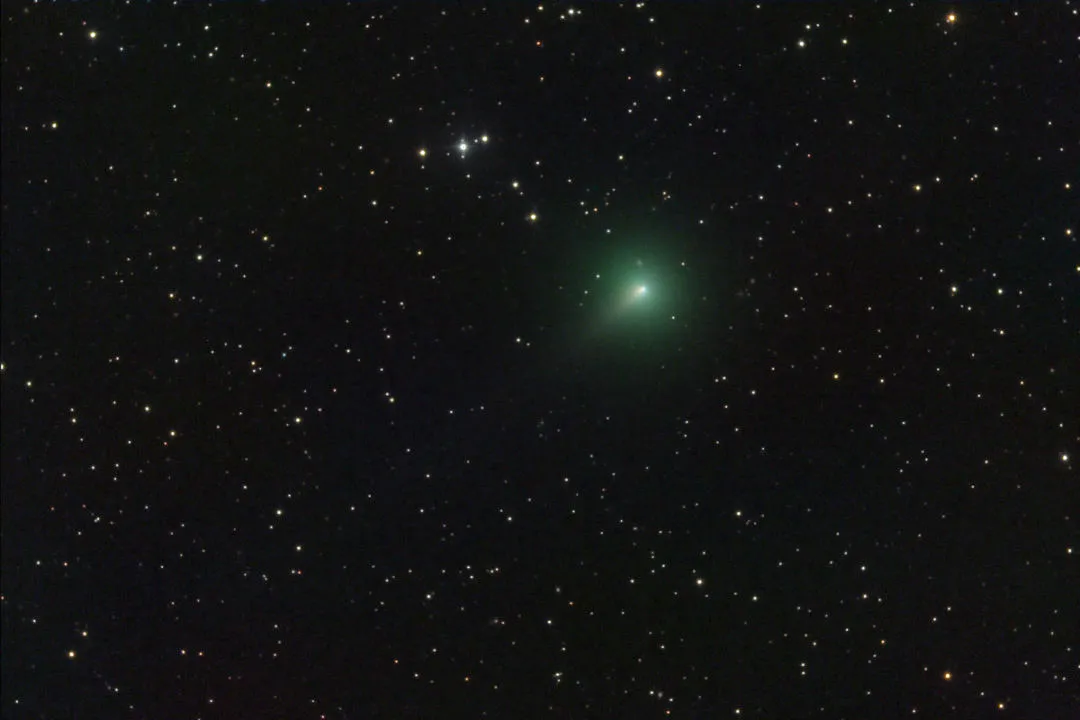
Soon, close-up images by astrophotographers showed the head of ATLAS – ordinarily where a solid, icy nucleus would hide among a shining cloud of gas and dust – was starting to elongate.
The comet was falling to pieces.
By 20 April, professional astronomers had pointed the orbiting eyes of the Hubble Space Telescope to the ensuing chaos, revealing fragments of the comet drifting through the darkness.

If amateur astronomers in the Northern Hemisphere felt any disappointment at what might have been, that was soon tempered by the naked-eye spectacle of Comet NEOWISE in the following months; while it graced the northern horizon with its magnificent dust tail, the fizzling away of ATLAS seemed quickly forgotten by most.
Even in its death, however, ATLAS had a story to tell scientists – one not just about the fickle nature of comets, but also about the deeper history of our planetary neighbourhood.
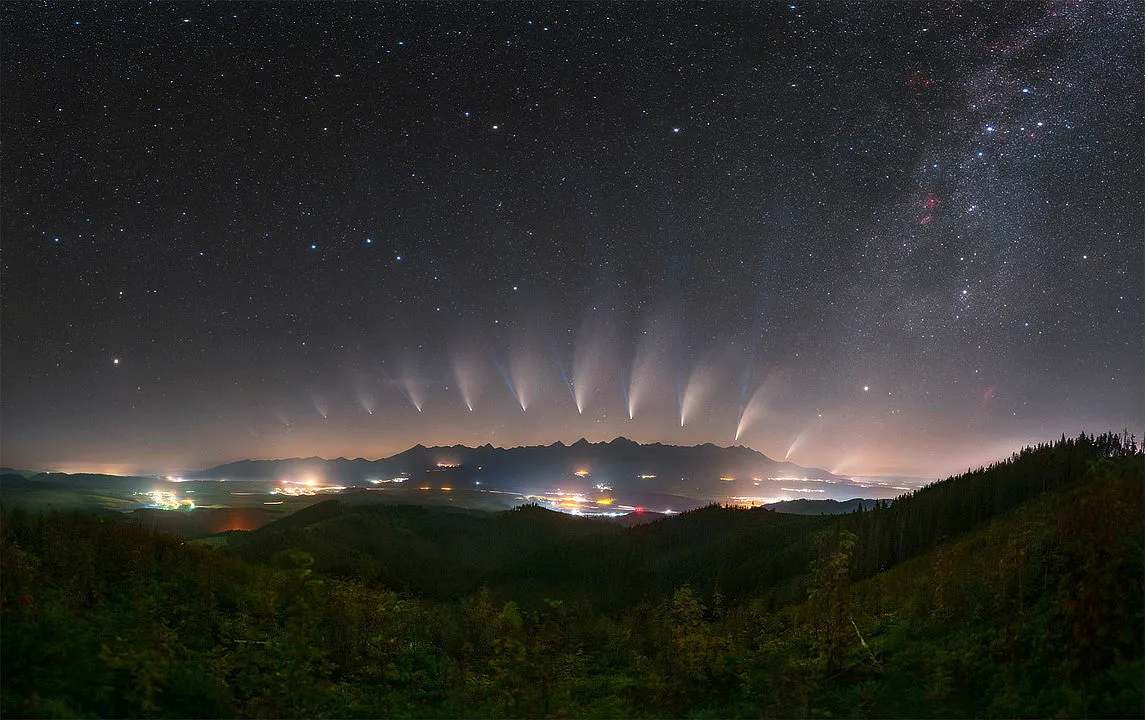
Why comets brighten
Comets brighten because, as they venture close to the Sun on their long, elliptical orbits, the warmth of our star causes ices to sublimate (change straight from a solid to a gas) from their frosty surfaces.
As this process unfolds, a cloud of material – known as a ‘coma’ – forms around the nucleus.
Some comets also develop tails, giving them the striking appearance these icy objects are so well-known for.
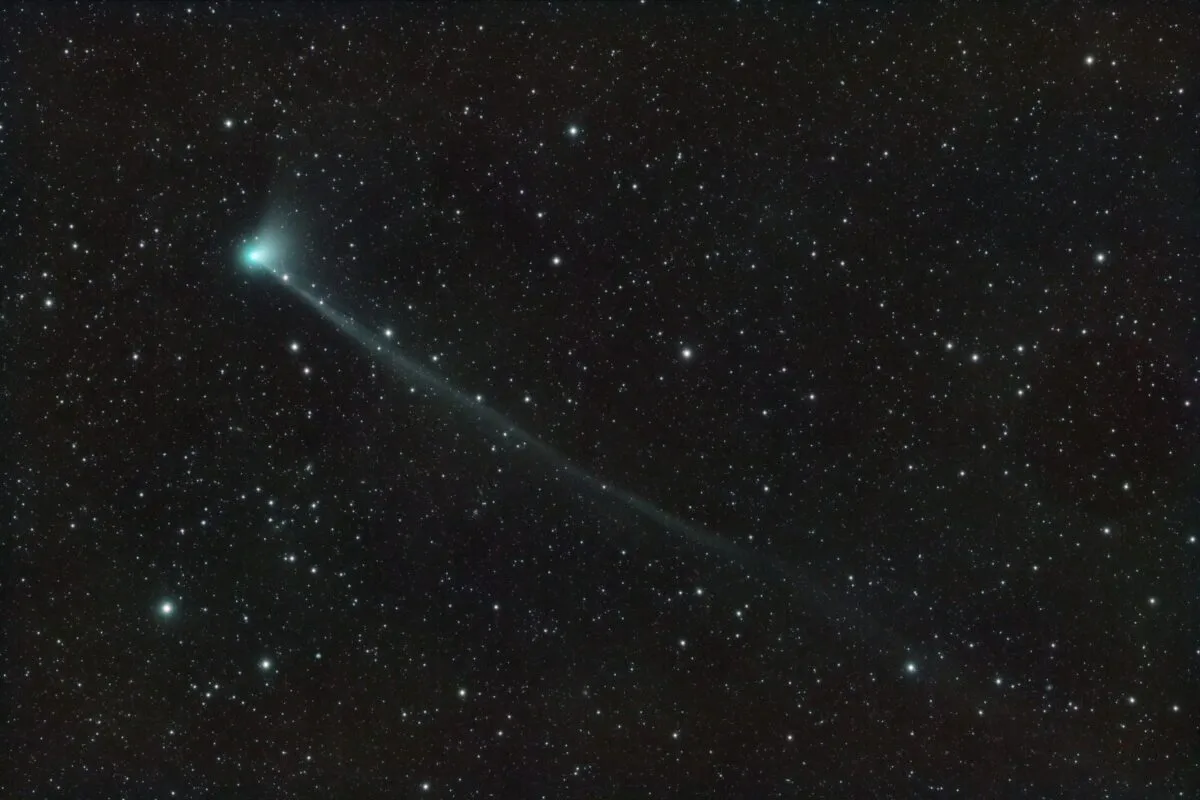
How visible and how bright a comet gets in our night sky depends on several things.
Such as how big its nucleus is and how close it gets to Earth and the Sun when it sweeps through the inner Solar System, explains Professor Laura Woodney, a planetary scientist and comet expert based at the California State University, San Bernardino.
The age of the surface of the nucleus also plays a role.
"We think that the more perihelion passages a comet has around the Sun, the more processed the surface becomes due to sublimation of ice, given that the larger rocky particles either fall back to the surface or are never lifted inthe first place, forming an insulating crust over time.
"Thus short-period comets with their frequent solar passages are less spectacular," she says.
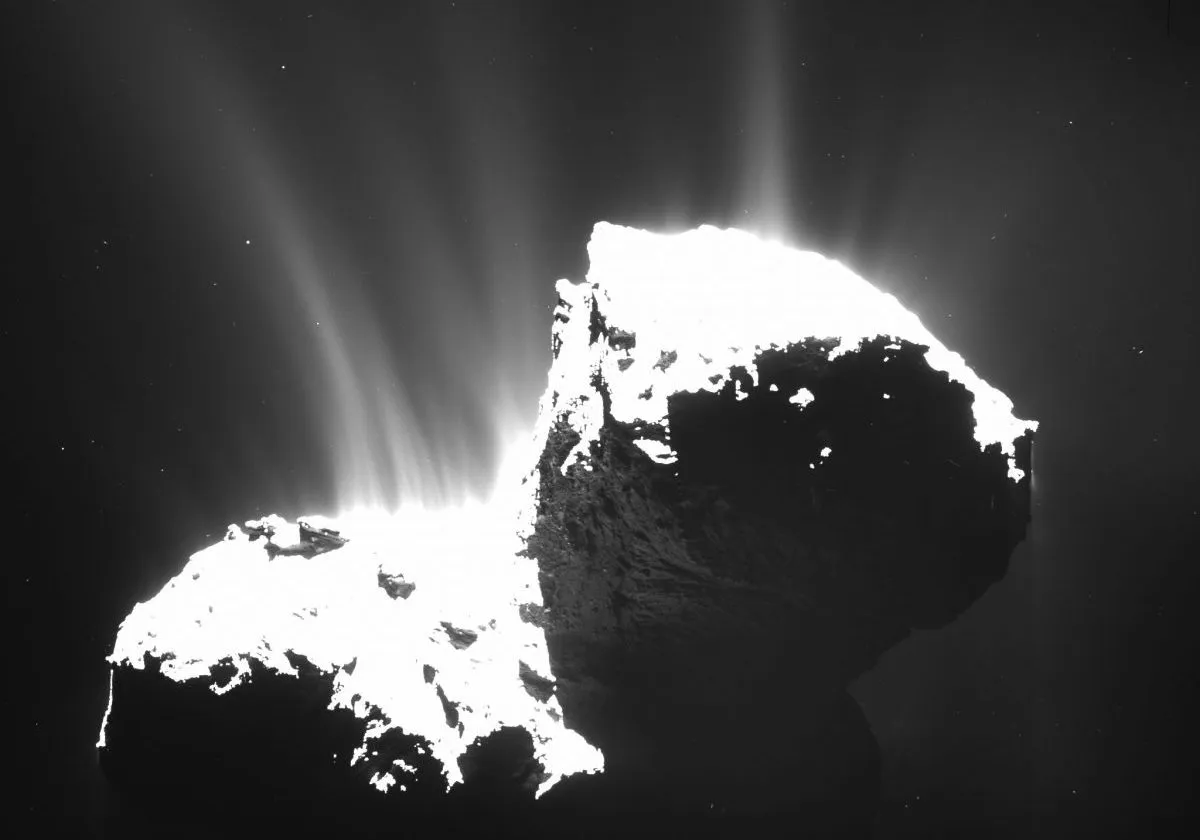
For certain comets making their first journey into the inner Solar System – what astronomers call a ‘dynamically new’ comet – the odds can be somewhat against them getting bright too.
"Statistically speaking, first-time visitors that approach the Sun within 2 AU [Astronomical Units, where 1 AU is the distance between Earth and the Sun] are more likely to fizzle out. But again, outliers are not uncommon. So we don’t really know,” says Dr Ye Quanzhi, an asteroid and comet researcher at the University of Maryland.
Anyone who remembers the saga of Comet ISON – a sungrazing comet that many hoped would become a spectacular sight in late 2013, but actually flopped – will recall the rollercoaster of emotions that comes with monitoring a dynamically new comet as it approaches perihelion.
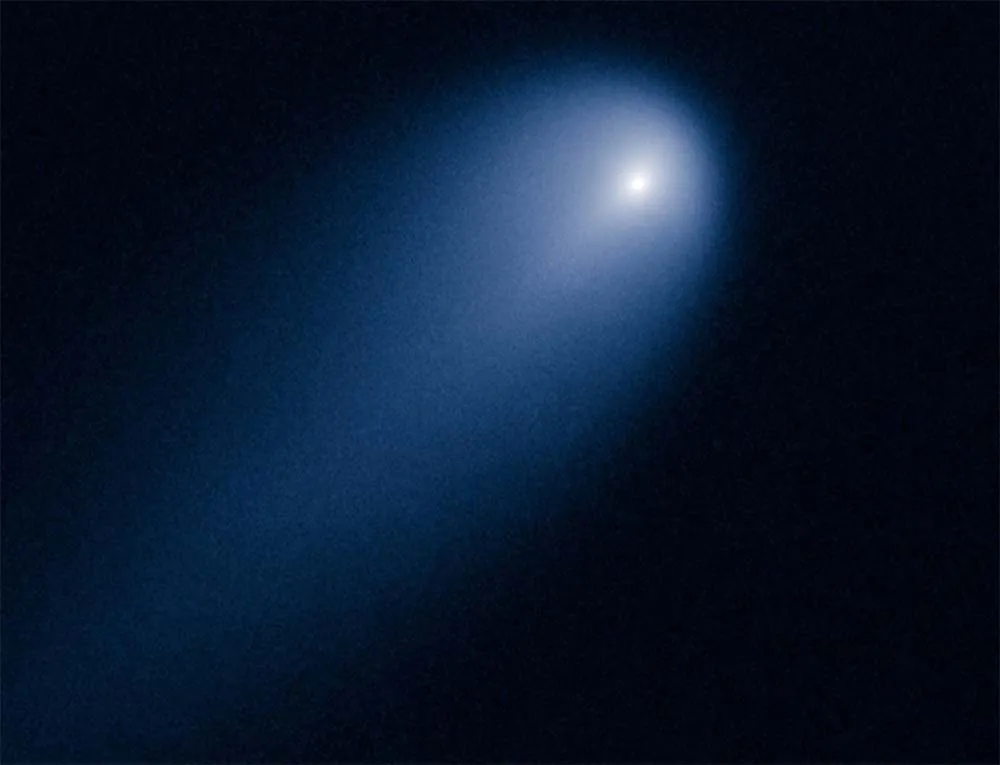
ATLAS, though, was neither a short-period comet nor dynamically new; its crumbling highlights just how hard it is, still, to anticipate the behaviour of these icy travellers.
Indeed, it’s just one of several comets that astronomers have witnessed breaking up over the years, including Comet 73P/Schwassmann-Wachmann in 2006 and more recently Comet 332P/Ikeya-Murakami in 2015.
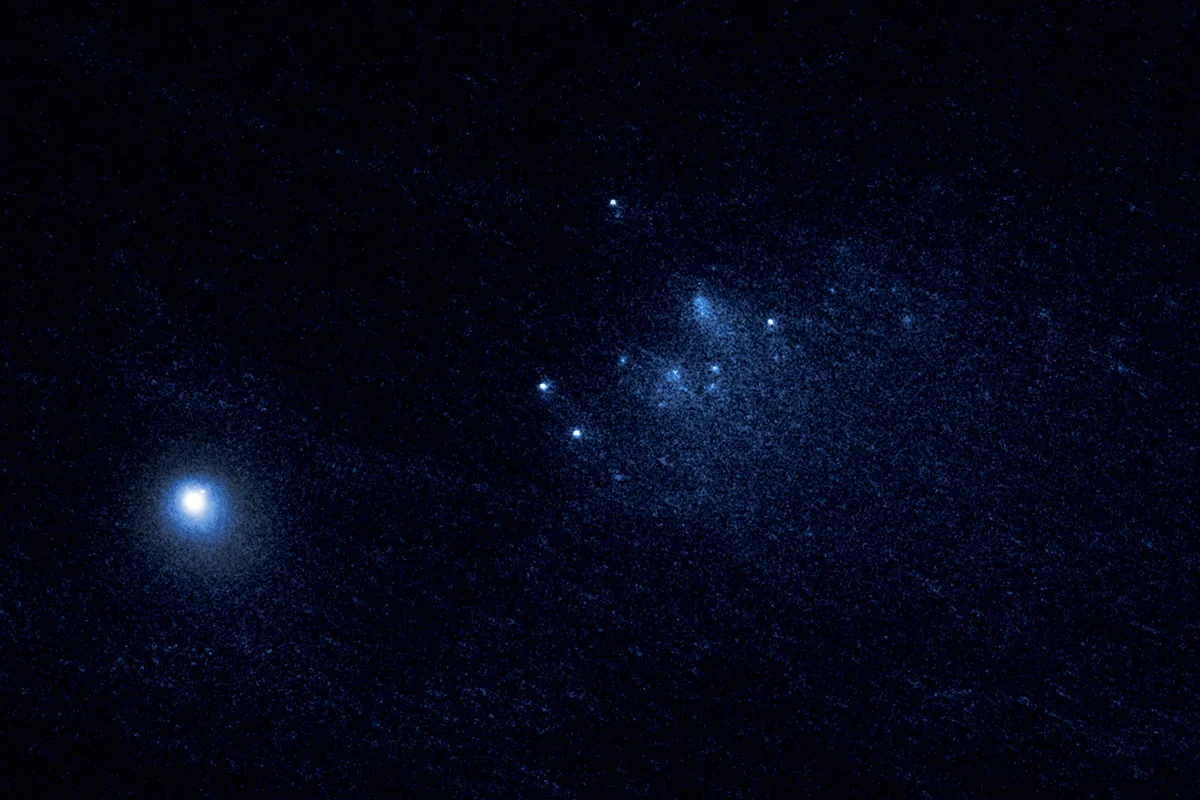
"[Disintegration] happens regularly, both to long- and short-period comets and we aren’t good at predicting why yet," says Woodney.
"That’s one of the interesting questions comet scientists are currently working on understanding right now."
Might there have been clues from ATLAS’s past, though, that pointed to its fate?
The comet caught the eye of Ye Quanzhi right from the moment it was found, back in December 2019.
"The preliminary orbit closely resembled another comet that appeared almost 180 years ago, C/1844 Y1," he says.
"The resemblance is a bit too great to be explained by pure coincidence, and it was pretty clear that the orbital period of ATLAS is much, much longer than 170 years.
"So this raised the interesting possibility that we are seeing a pair of comets that share a common progenitor and are likely to be the end-product of a prehistoric break-up event."
Analysing Comet ATLAS with Hubble
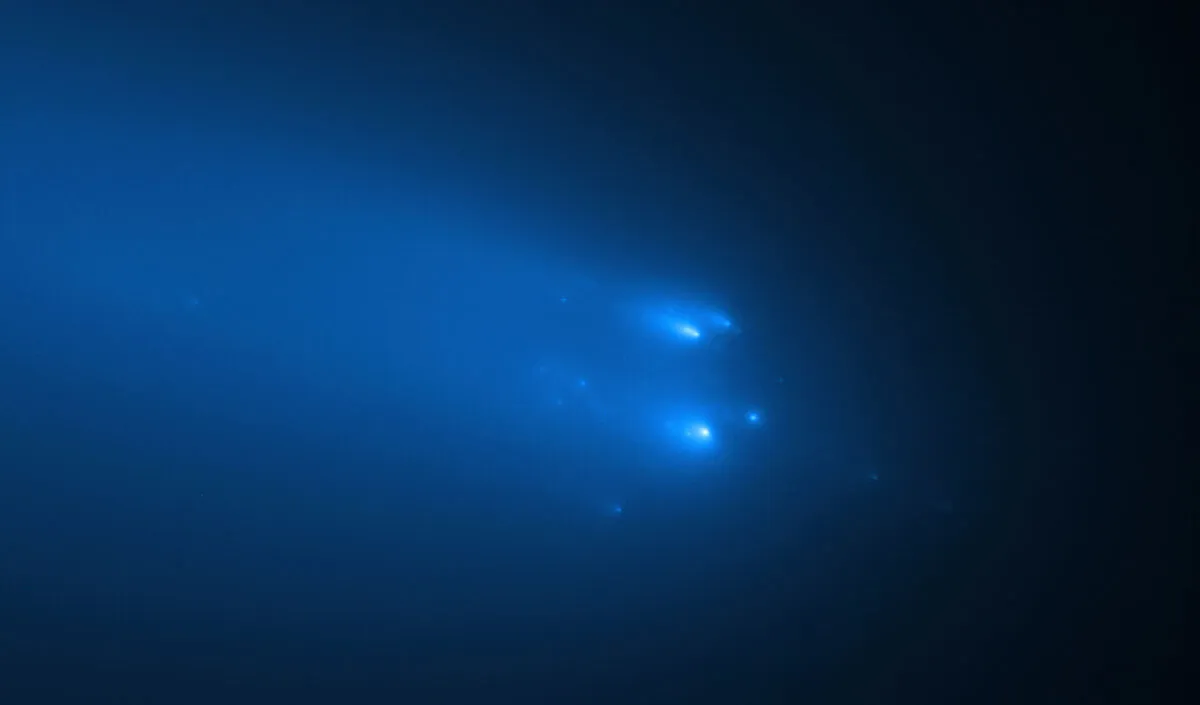
To explore ATLAS further, Ye and his colleagues requested time on the Hubble Space Telescope to examine the comet.
"Our motivation back then was primarily to look for fragments produced during ATLAS’s last visit, 6,000 years ago," he says.
The team’s proposal was sent to Hubble managers in January; but between then and when the orbiting telescope would actually turn its optics toward the comet, in late April, ATLAS underwent its spectacular fragmentation.
"We secretly hoped, but wouldn’t have really guessed that ATLAS would break apart a bit before our scheduled observation – that was a really pleasant surprise," says Ye.
"Our observation happened overnight and I woke up quite early the next day. It felt like opening a gift box when I was downloading the data."
Another group of researchers had also been allocated observing time as well, and in total three orbits of the space telescope would eventually be dedicated to scrutinising the spectacle occurring out in space.
The dramatic pictures from Hubble, captured by both teams, showed large chunks of the comet whirling through space within a chaotic cloud of icy debris.
"Since we have images from three different epochs, we can measure the changes in brightness and velocity distributions of the fragments; like how the fragments move with respect to each other and how they fizzle out," explains Ye.
"These will help us to understand the mechanism that drives the fragmentation of the comet, which will in turn tell us how the nucleus was held together."

What comets tell us about the early Solar System
Not only can studying a comet’s disintegration provide specific clues to its construction, it also has the potential to reveal details about processes
that were going on in the Solar System long ago.
"One of the most interesting questions to ask is if the fragments have compositional differences," says Laura Woodney.
This can give insights into the distribution of different materials within the nucleus – something that can illuminate the broader formation history of comets and icy planetesimals.
For Dr Ekaterina Chornaya, and her colleagues at Russia's Far Eastern Federal University and elsewhere, the demise of ATLAS provided a glimpse at the interior constituents of a comet’s nucleus – one that would also shed light on its origins.

"Comets or, speaking more precisely, their nuclei are widely thought to be fossils from the time of our Solar System’s formation,” says Chornaya.
"They are remnants of planetesimals which were thrown out of the inner part of the Solar System during or shortly after its formation."
Some comets might have been flung into the frozen realms at the Solar System’s edge early on in that period, before the Sun even switched on, says Chornaya.
There they would have been kept in a largely pristine state.
Others may have lingered for a while in our star’s warmth, prior to being ejected outwards.
"In the latter case, [a comet’s] surface may experience a significant weathering due to frequent heating and micro-meteoroid bombardments," she explains.
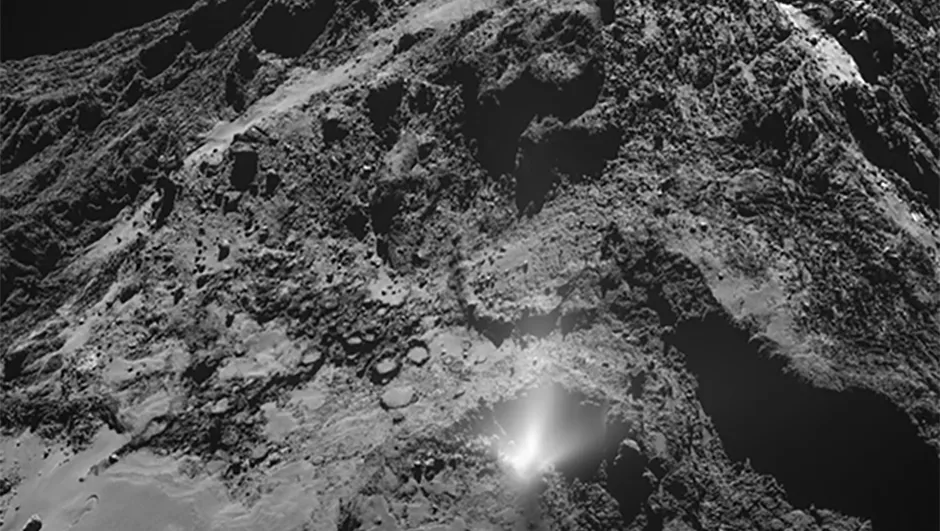
Piecing together the details of such ancient history from their apparent composition is one of the challenges planetary scientists face with comets.
"When observing a comet upon its return to the inner Solar System, in general, we see not only its pristine materials, but also significantly altered materials,"
says Chornaya.
"The point is that we do not know the fractions of each type of materials in a given comet."
As ATLAS broke apart it opened up an extraordinary window onto the pristine contents of its heart, however.
Utilising a half-metre aperture telescope sited at the Ussuriysk Astrophysical Observatory, Chornaya and her fellow researchers studied the light from ATLAS both before and after it fragmented.
You can read their paper, Microphysics of Dust in Disintegrating Comet C/2019 Y4 (Atlas).
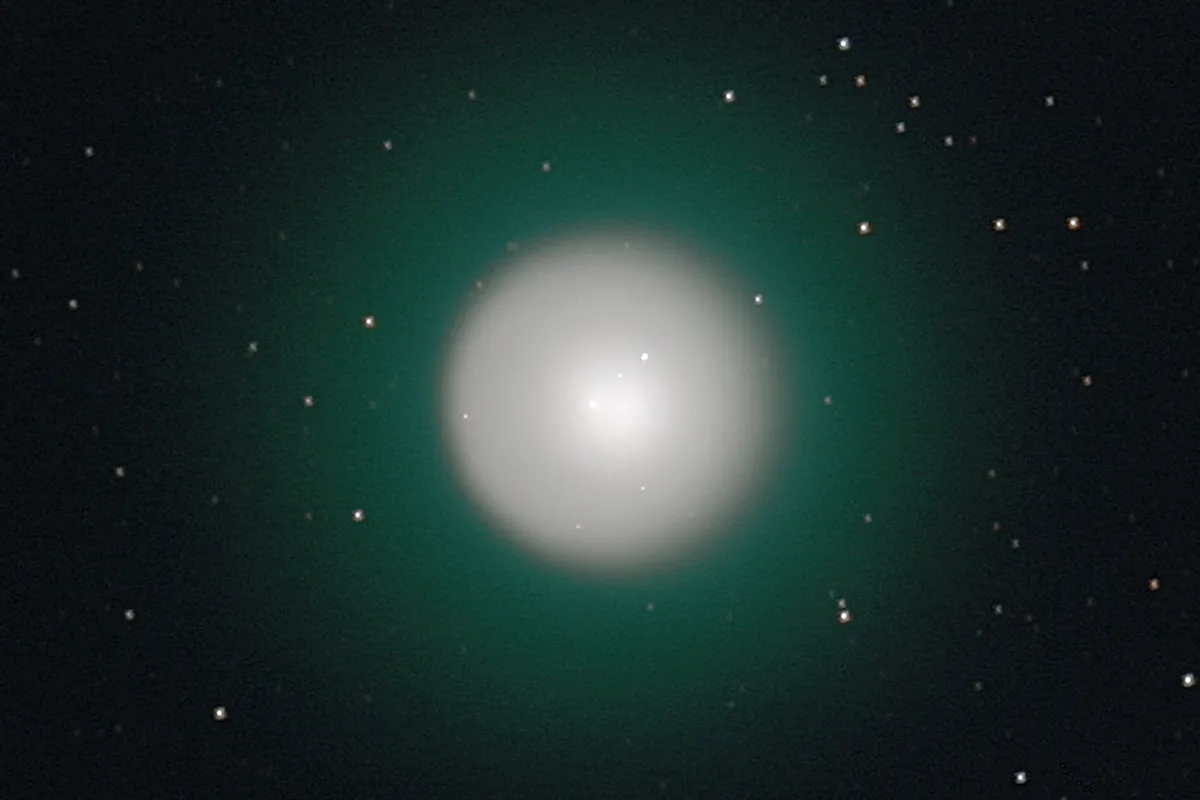
"We were lucky to catch the comet prior to its disintegration," says Chornaya.
"This makes it possible to draw a whole picture and it is a quite unique chance."
The team’s observations showed the relative amounts of certain substances changing as the comet crumbled – something that could hint at what the make-up of unaltered cometary material is.
The researchers also detected a conspicuous rise in the amount of carbonaceous dust particles swirling around the disintegrating comet’s coma.
These microscopic particles are relics from the birth of the Solar System and a sign of the truly ancient nature of the comet’s interior.
That’s because, today, those tiny flecks would be blown far from our planetary neighbourhood by the light – technically the ‘radiation pressure’ – from the Sun.
The fact the signs of them appeared in the light from ATLAS indicates they were incorporated within the comet’s nucleus long, long ago – prior to the point when the Sun began shining as it does now.
ATLAS has told us so much already. Perhaps the next time a comet fizzles before our eyes, those initial pangs of disappointment may turn to excitement at what we might learn from the disintegration of these amazing objects.
This article originally appeared in the October 2020 issue of BBC Sky at Night Magazine.
